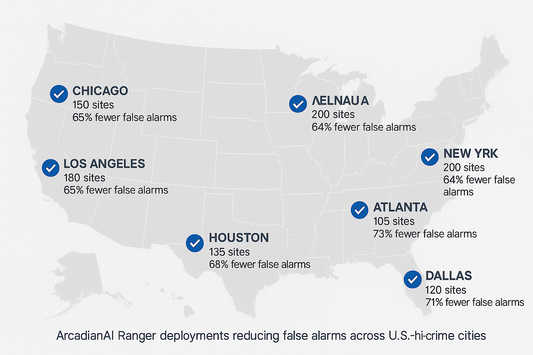After a lack of support from community safety forums and pushback from groups like the NAACP and ACLU, Mayor Bruce Harrell’s office decided not to pursue the technology. Seattle, instead, has expanded other forms of police surveillance, and seeks to develop its own crime prevention software system.
And while Seattle passed on this technology, Tacoma — Washington’s third largest city — adopted one such program this year.
In Seattle, Harrell and the Seattle Police Department had proposed installing acoustic technology alongside camera systems to address the police staffing shortage amid an increase in both homicides and the use of firearms in crimes.
While Seattle had not named a specific acoustic gunfire detection vendor in its proposal, one of the most prominent is ShotSpotter, which has been used in about 150 cities nationwide.
ShotSpotter uses microphones spread around an area to detect loud sounds that resemble gunfire, and determines the sound’s location using technology, Thomas Chittum, senior vice president of forensic services at SoundThinking, the creator of ShotSpotter, told Cascade PBS earlier this year.
Company employees filter the sounds to determine if they are gunshots; if they are, alerts are sent to police. Chittum said this allows police to respond more quickly to incidents.
Seattle community groups and national experts criticized Harrell’s proposal, saying the costly program was ineffective and that the money would be better allocated to other resources to prevent and end gun violence. Groups against the technology argued that it could lead to the increase of biased policies and the abuse of marginalized groups.
Despite giving acoustic gunfire surveillance a pass, Seattle has increased its other surveillance technologies. Automated license plate readers are deployed in all Seattle Police Department vehicles. The city also plans to install closed-circuit television cameras on Aurora Avenue North and in the downtown Third Avenue corridor and the Chinatown-International District, which are established Stay Out of Drug Areas (SODA) and Stay Out of Areas of Prostitution (SOAP).
A new real-time crime center software is also in development. All of these technologies were signed into law in October by the mayor and City Council.
The real-time crime center prevention technology will not include an acoustic gunshot location system, as the cost estimates exceeded the approved budget.
The pilot program, currently in the procurement and permitting process stage, is expected to launch in early 2025, the mayor’s office told Cascade PBS.
Harrell’s original surveillance system enhancement proposal was approved by City Council in 2021, but the Council is reviewing his new proposal to continue its expansion.
Seattle is not the first city to decide against ShotSpotter’s technology. Chicago terminated its six-year, $49 million contract with ShotSpotter. Other cities nationwide pulled out of their contracts. including Charlotte, North Carolina; Atlanta; New Orleans; Trenton, New Jersey; and San Antonio. SoundThinking told Cascade PBS earlier this year that a large number of cities renew their ShotSpotter contracts.
However, despite the rejections by Seattle and these other cities, some jurisdictions continue to try ShotSpotter as a crime-prevention tool.
The city of Tacoma started piloting ShotSpotter in September after receiving an $800,000 Smart Policing Initiative grant from the federal Department of Justice’s Bureau of Justice Assistance. Implementing the technology is phase 2 of the city’s Violent Crime Reduction Plan.
ShotSpotter covers two square miles of the South Hosmer Street area. Their first area of focus was chosen after data indicated a high number of calls of crime in that area, saying it had the “highest violent crime rate.”
The Tacoma Police Department said on its website that if the technology is not consistent with the values of their agency, they will immediately cease use of it. The pilot program is scheduled to end in 2027, after which the city will decide whether to renew the program based on data collected throughout the trial period.
Tacoma city officials say the city’s goal in using the program is to reduce violent crime to allow the police department to focus on property crimes.








